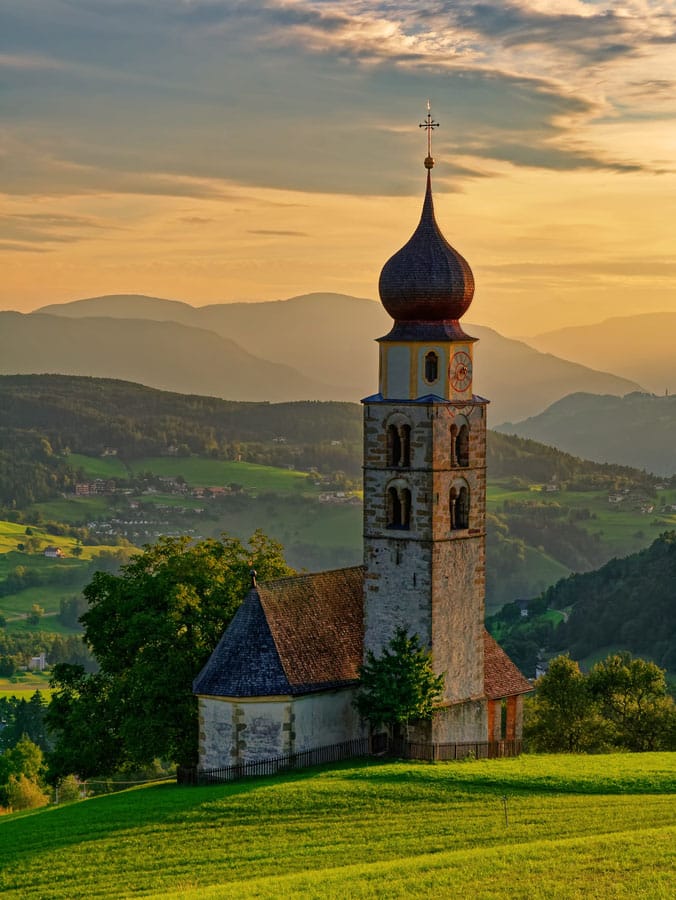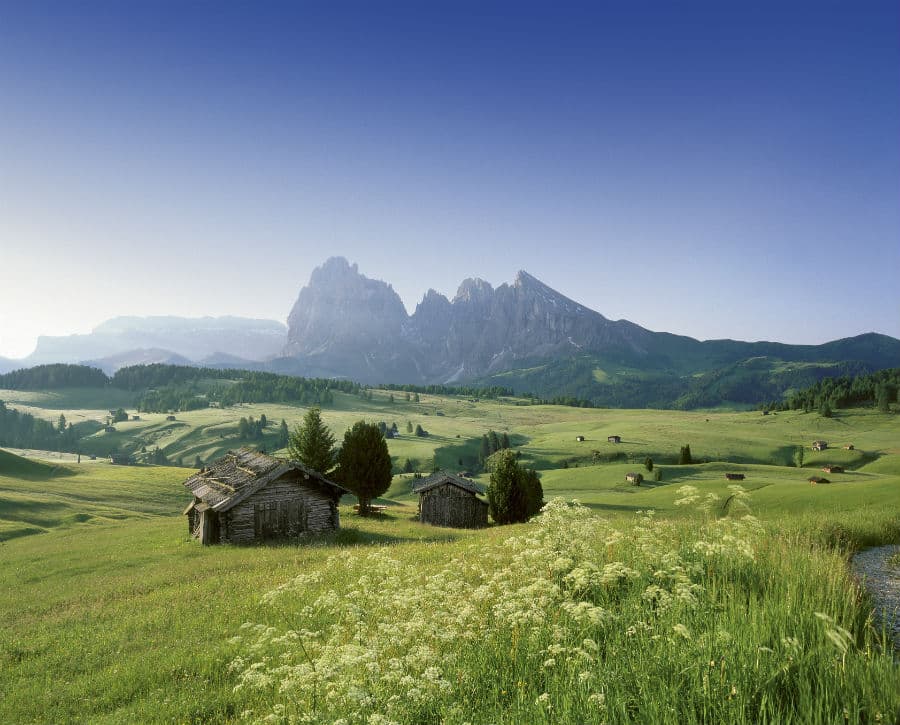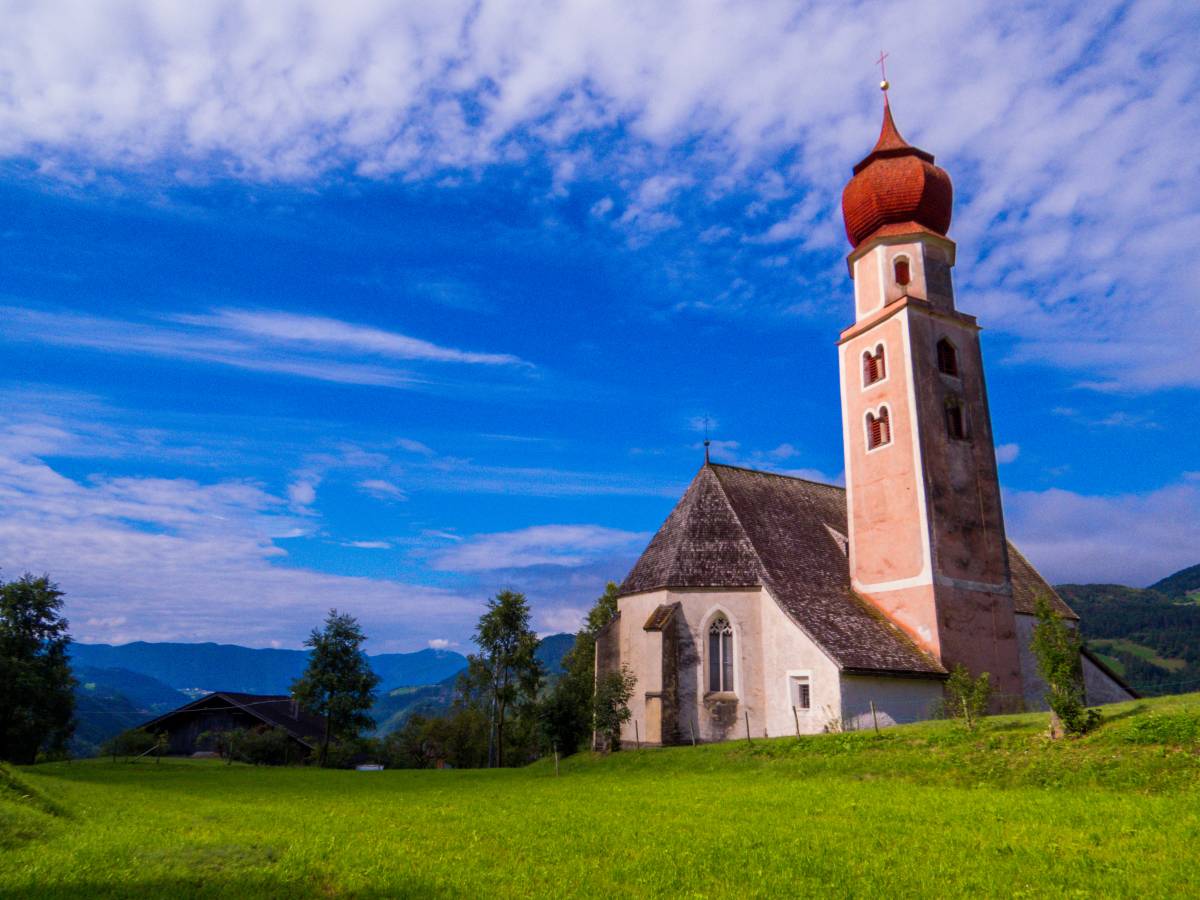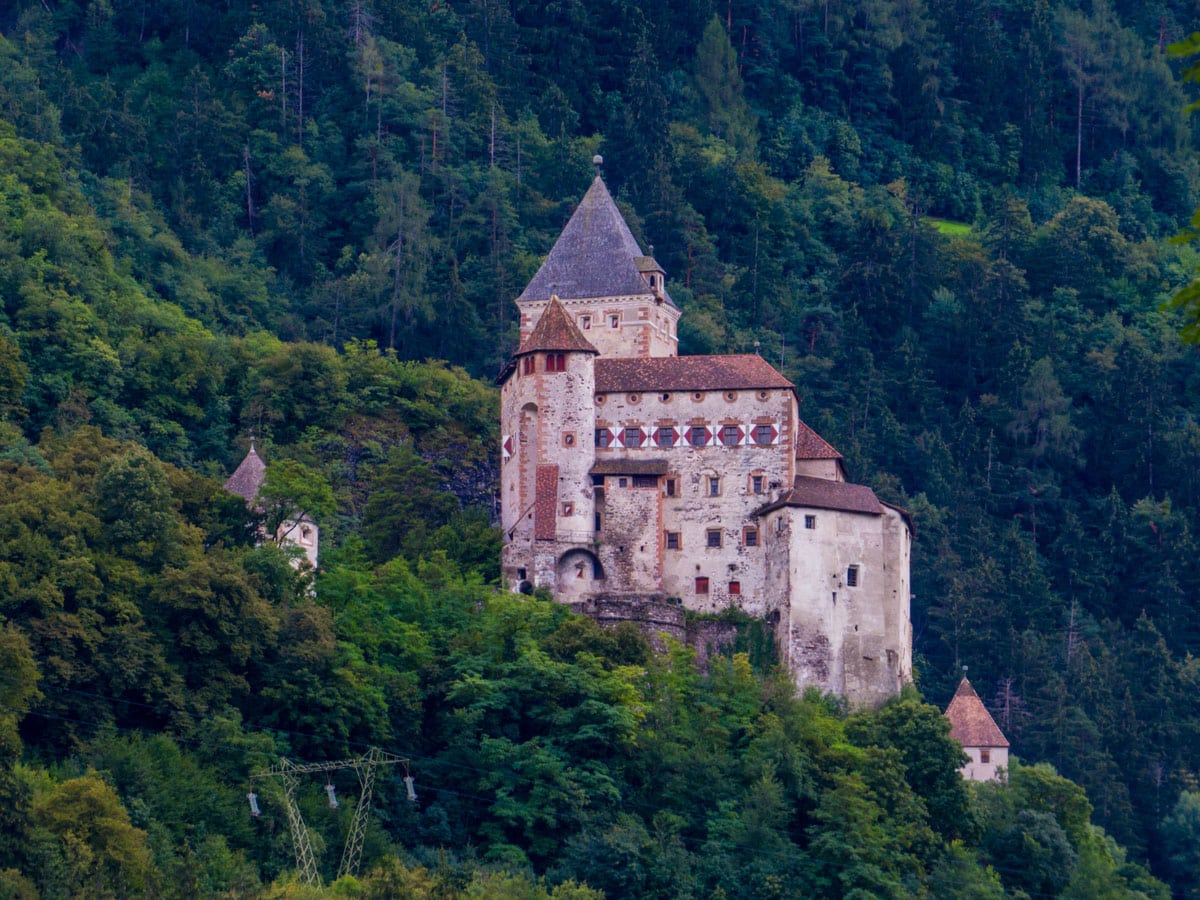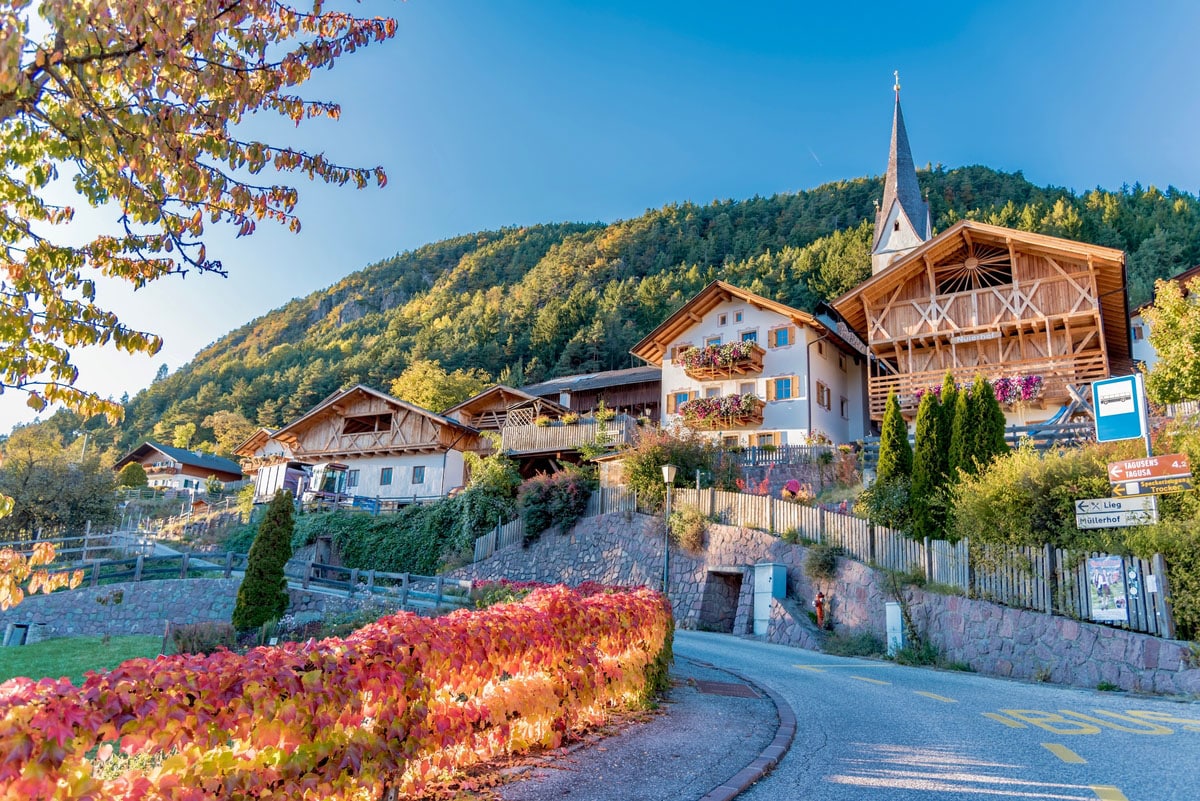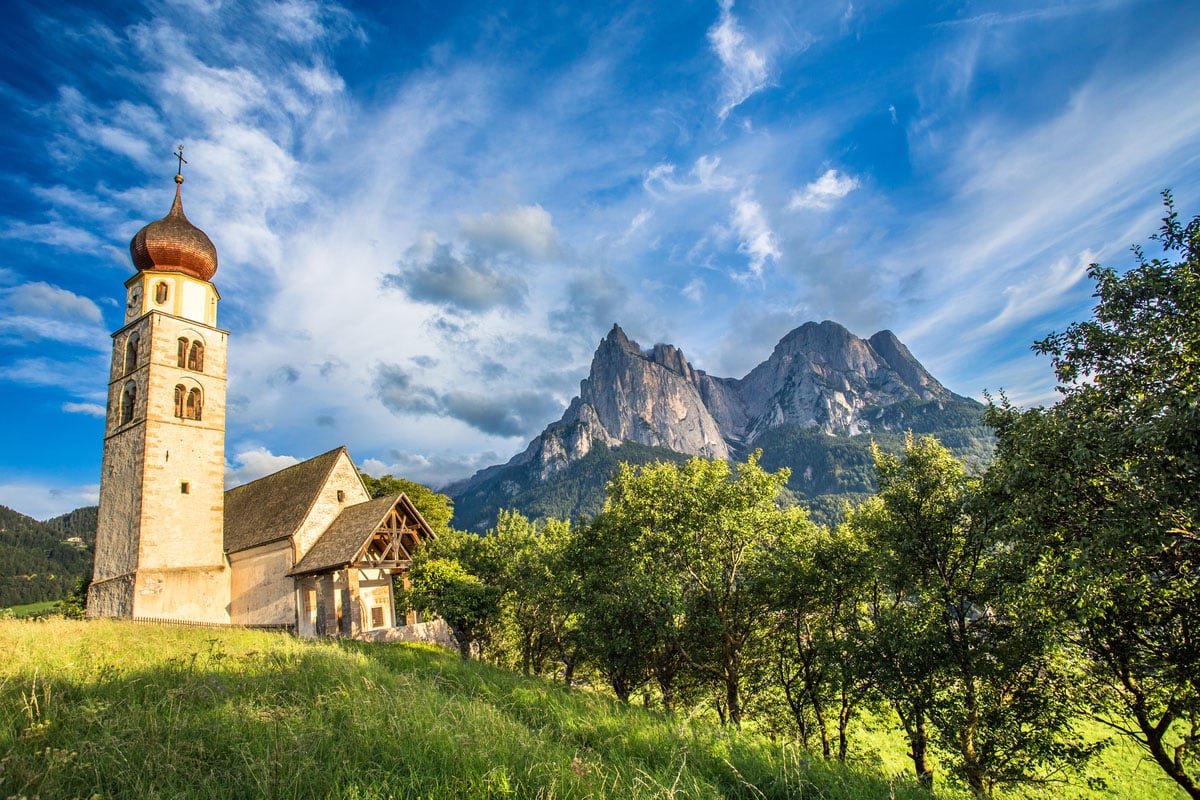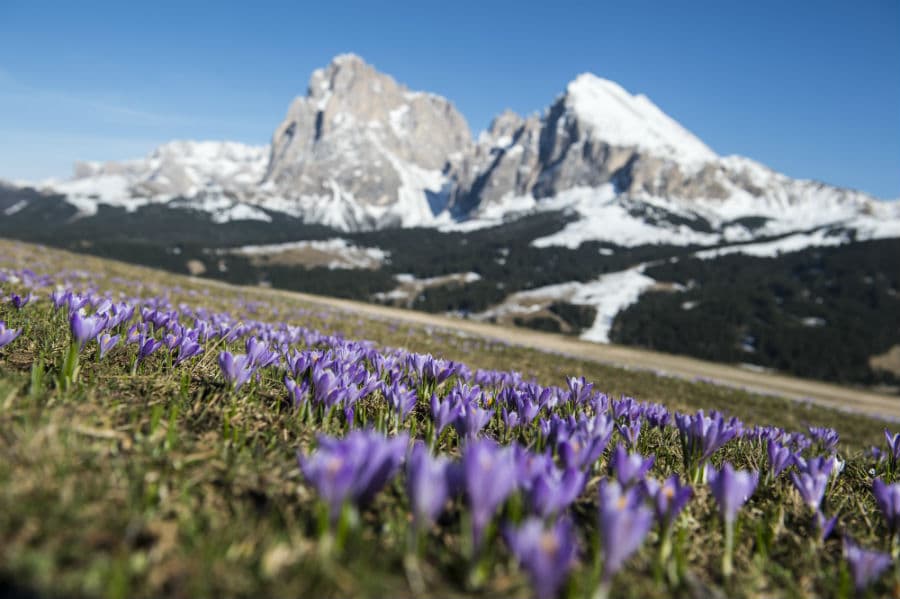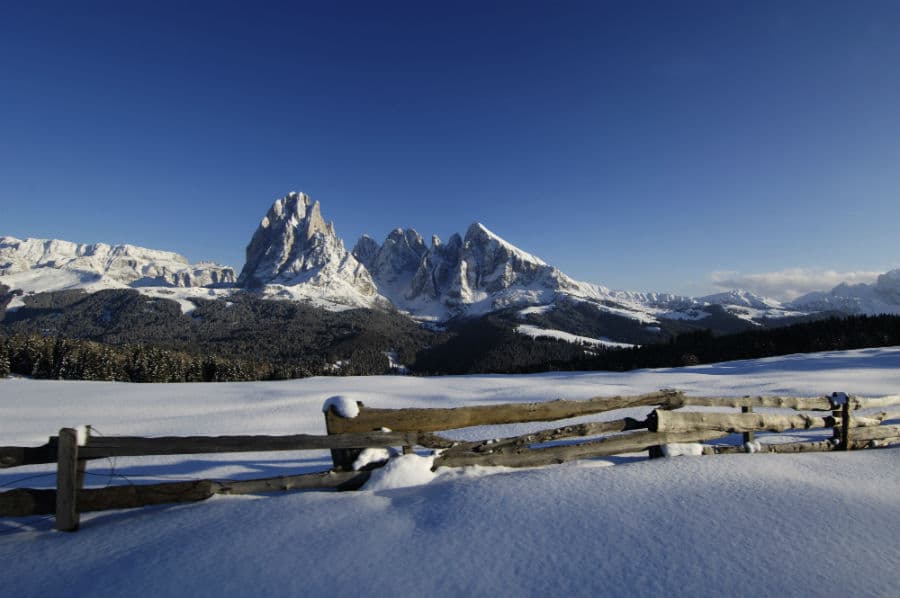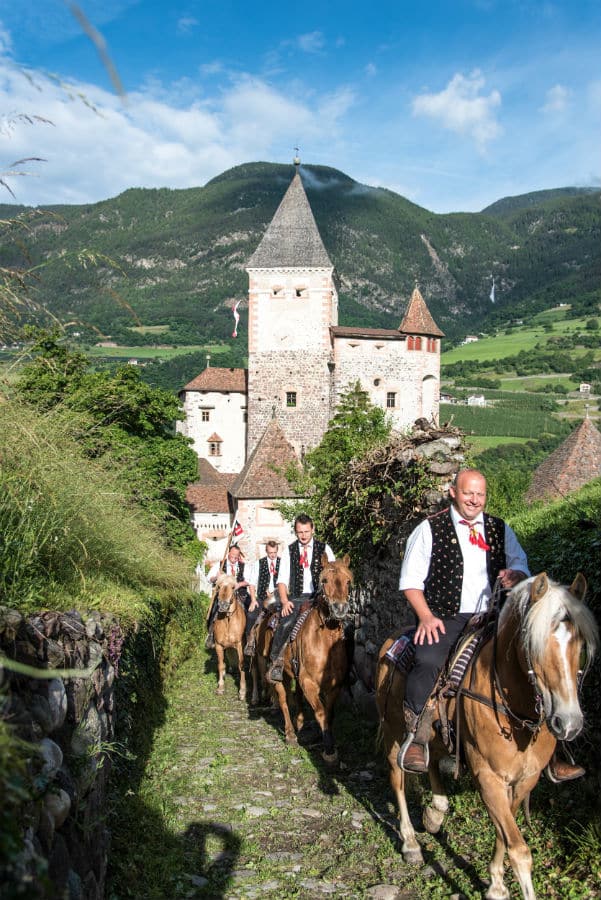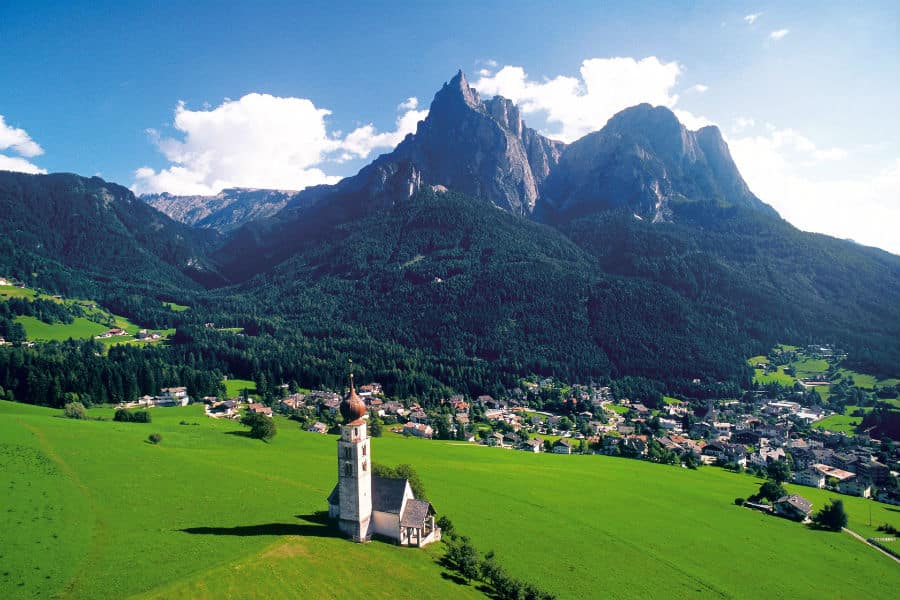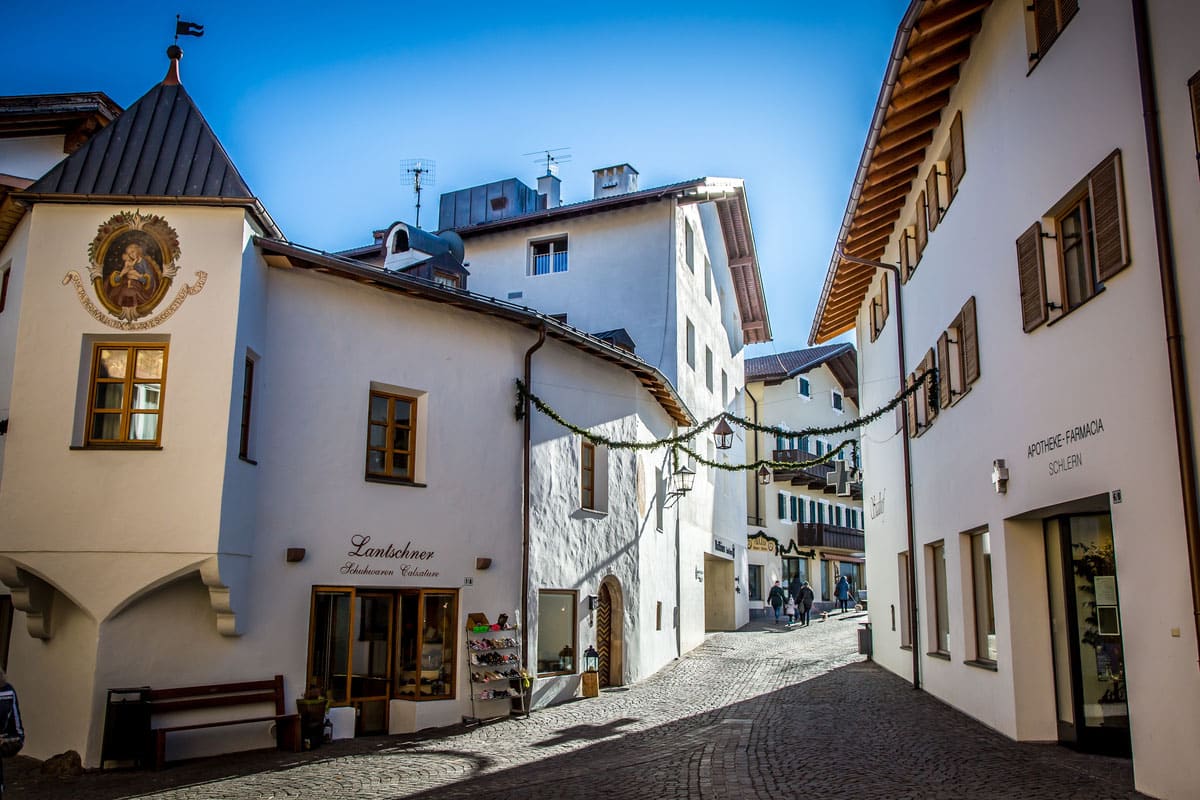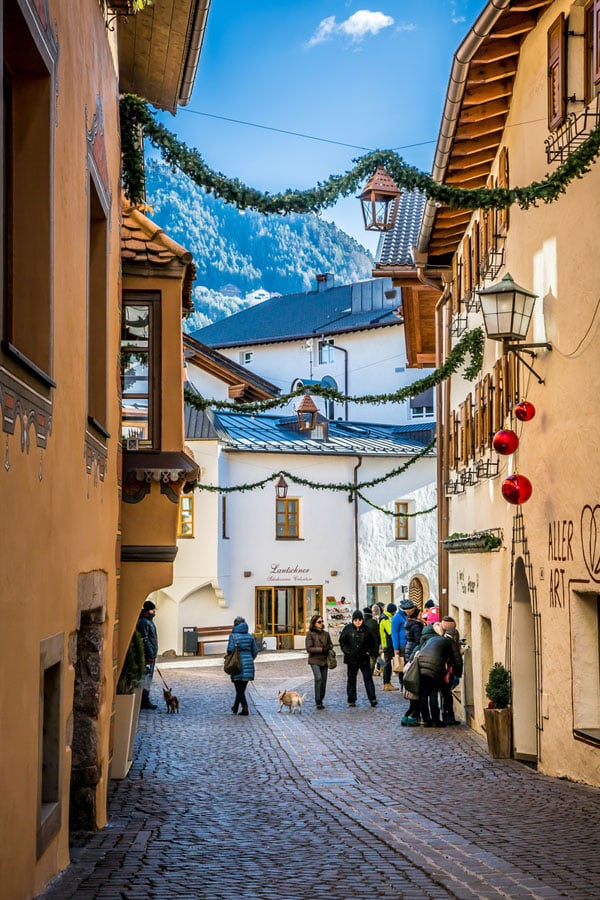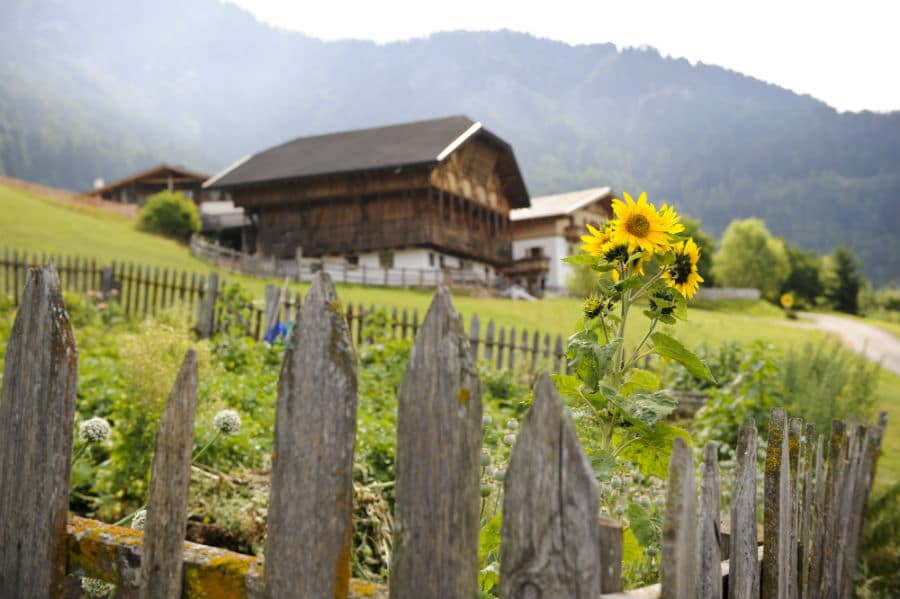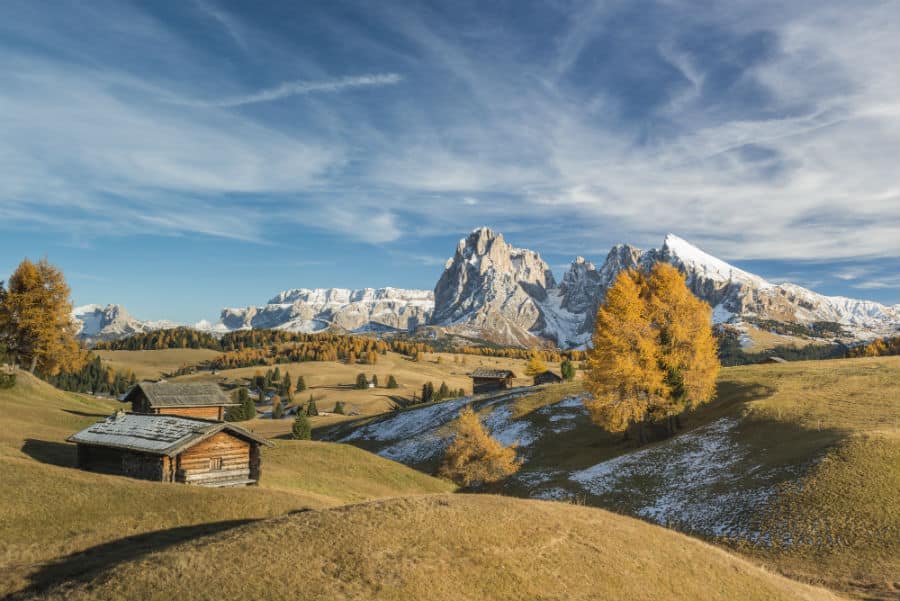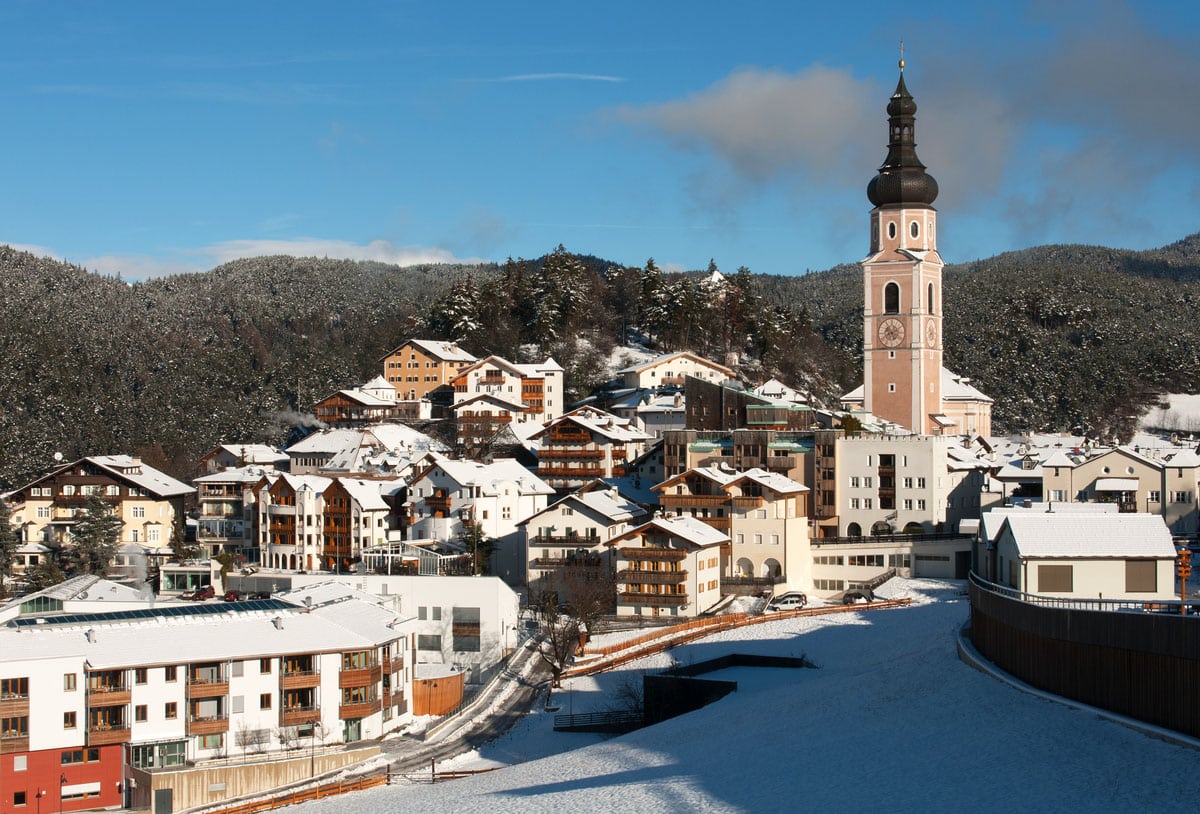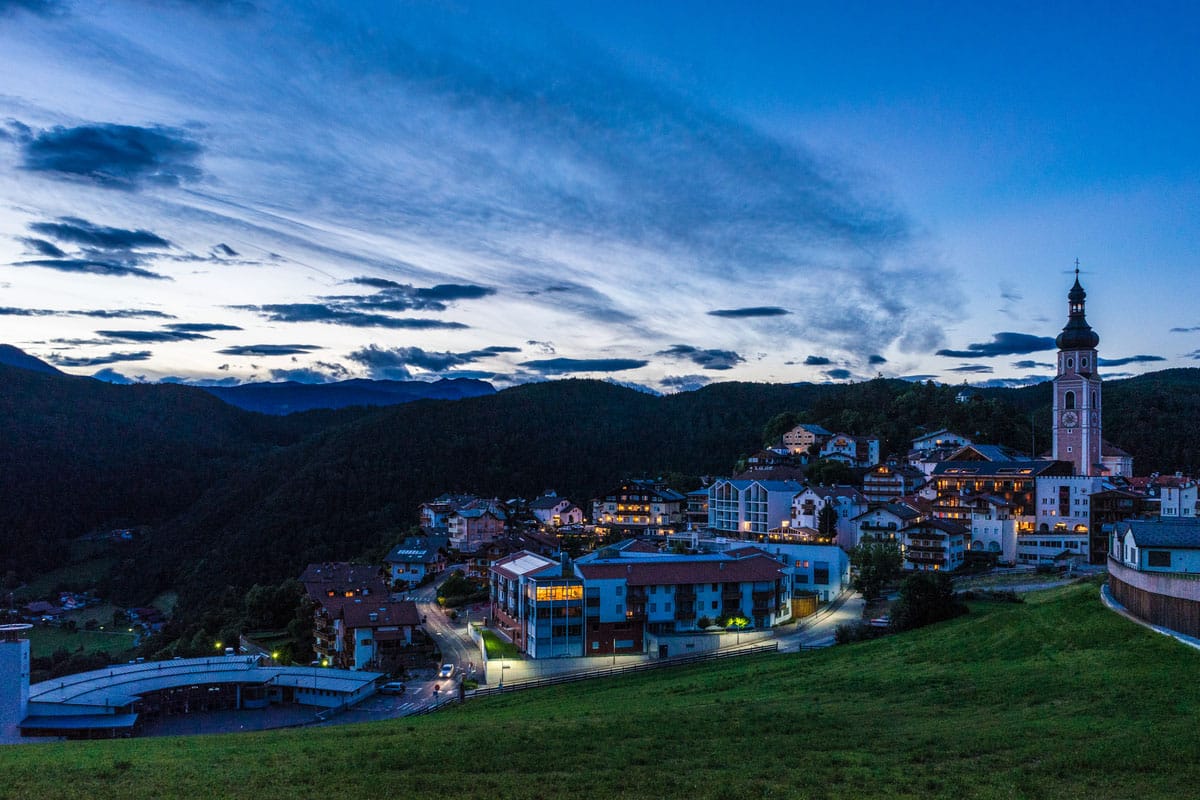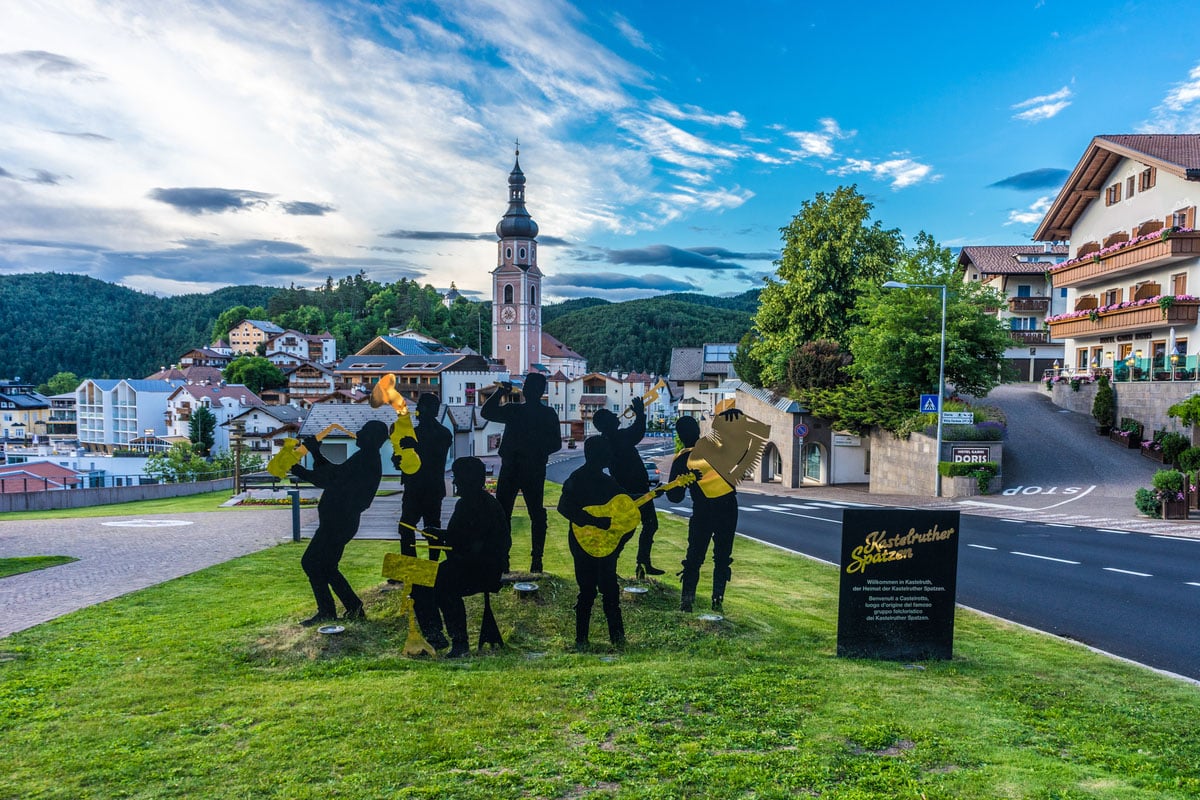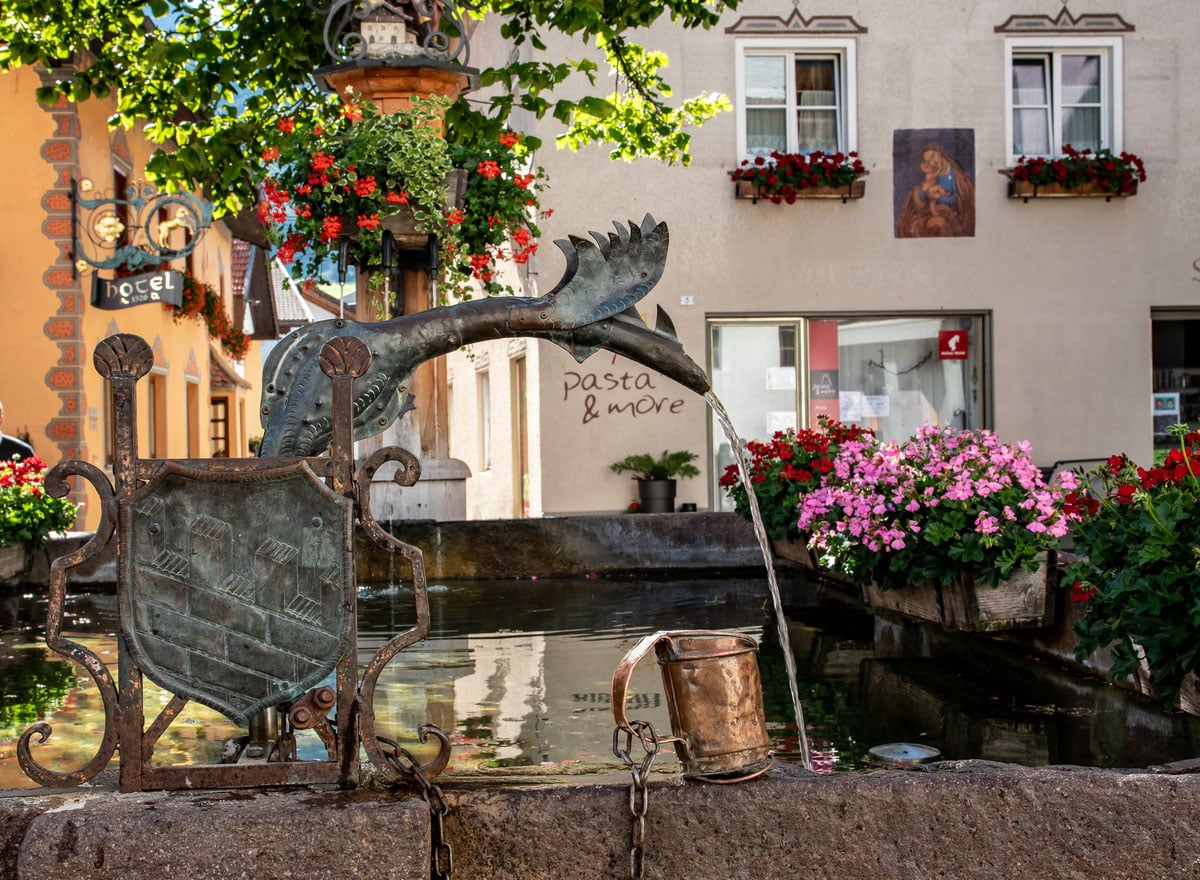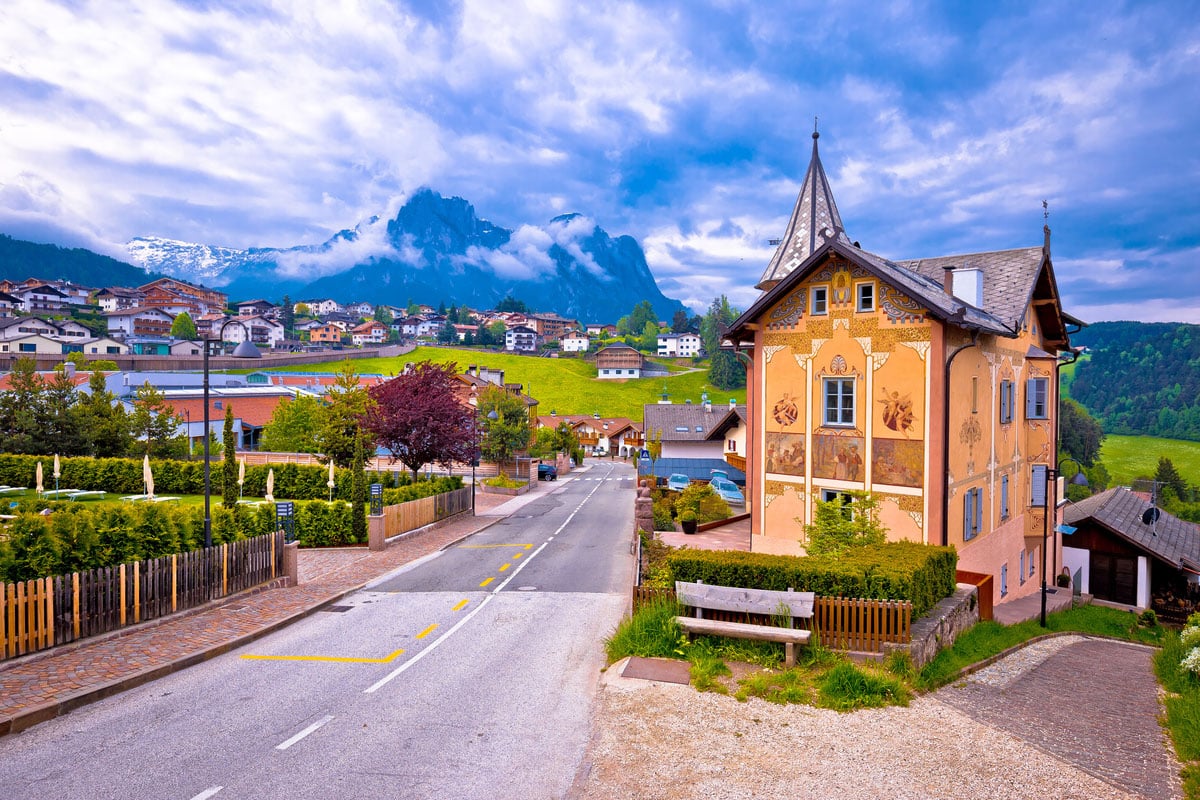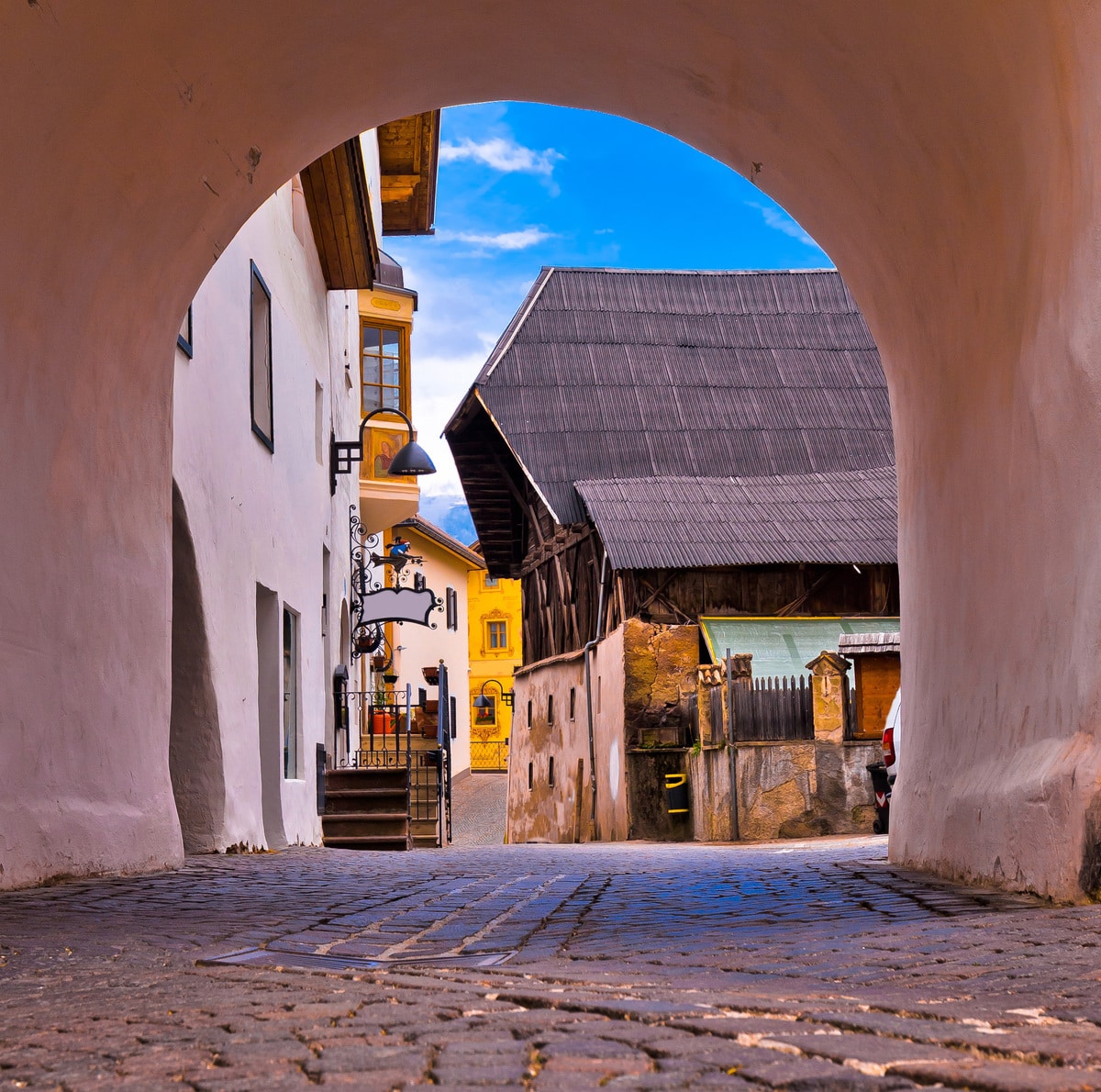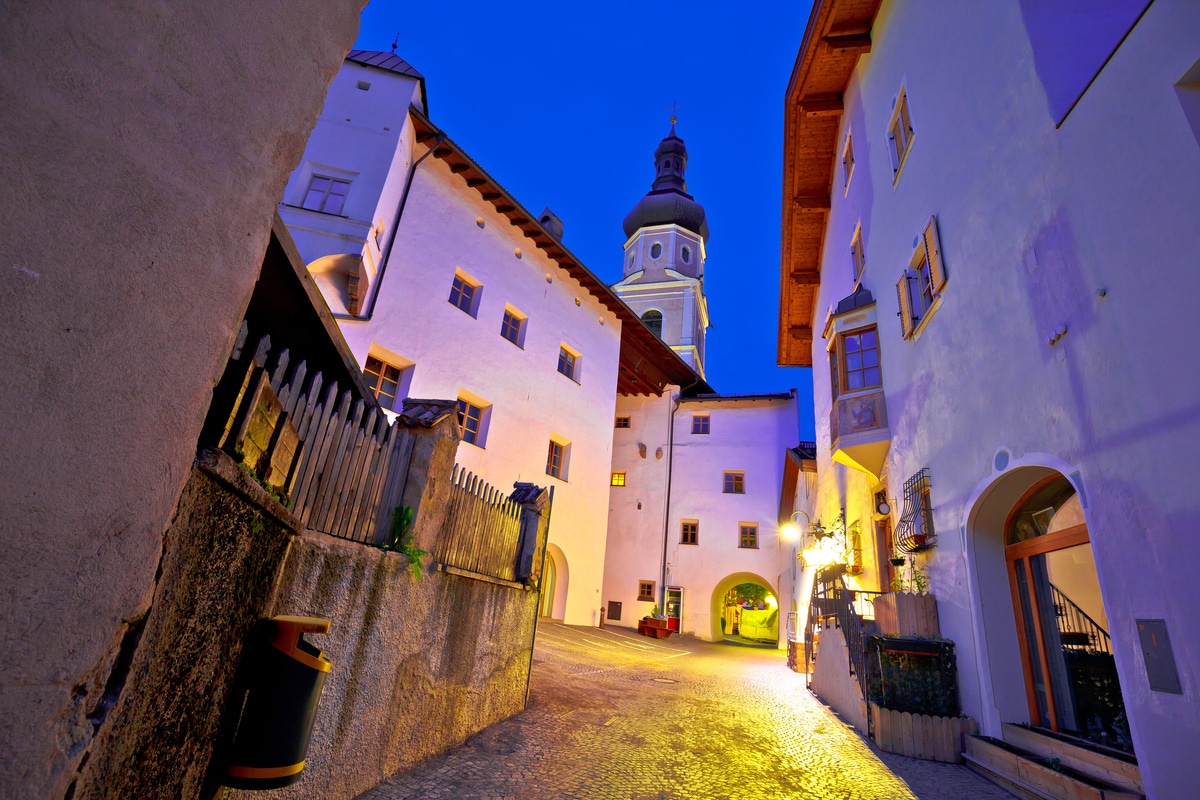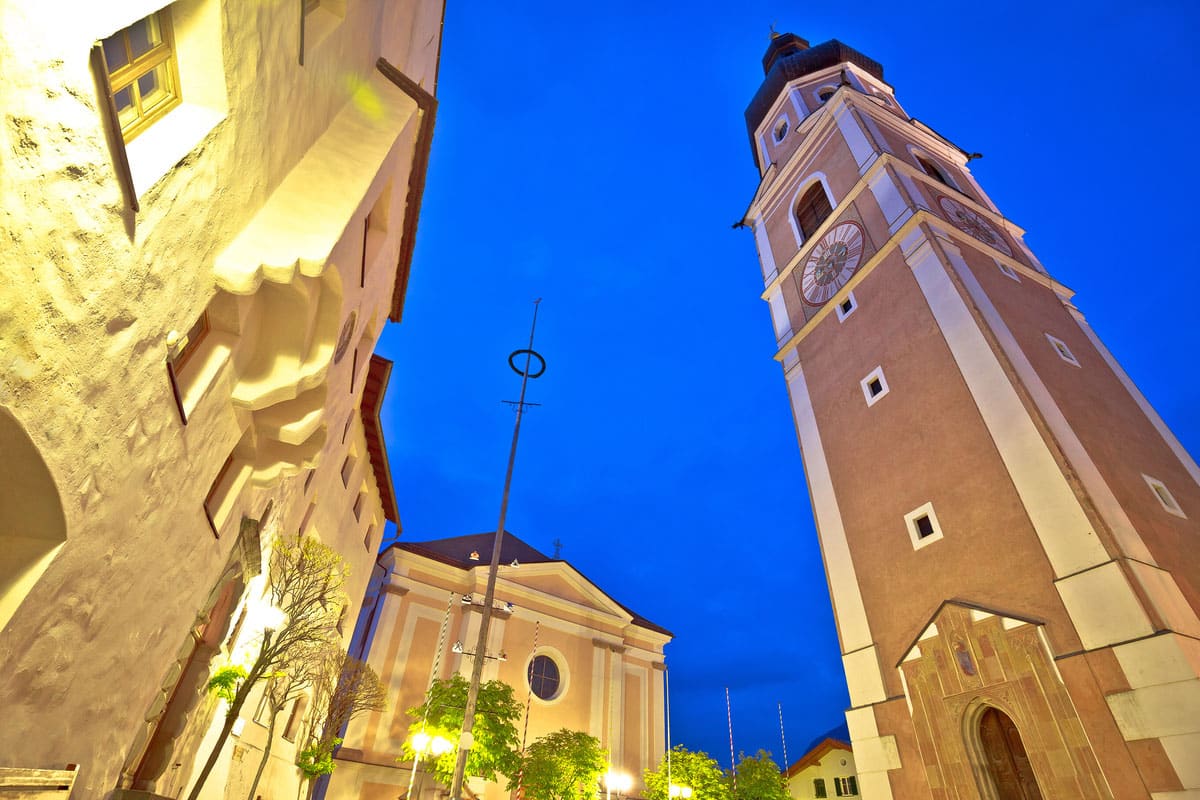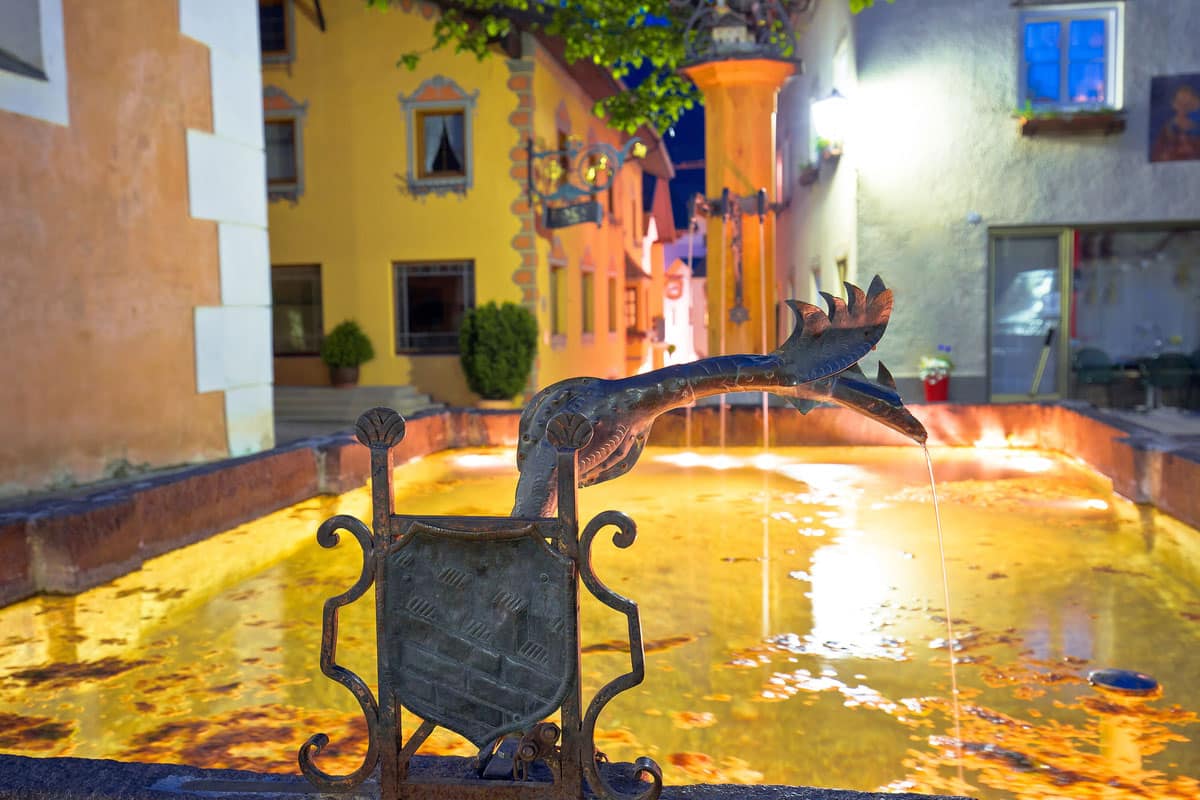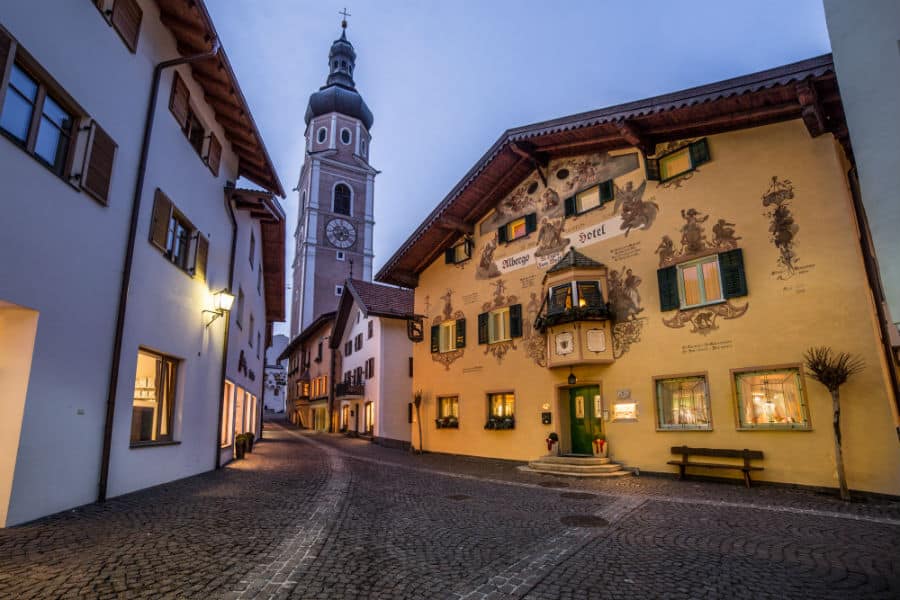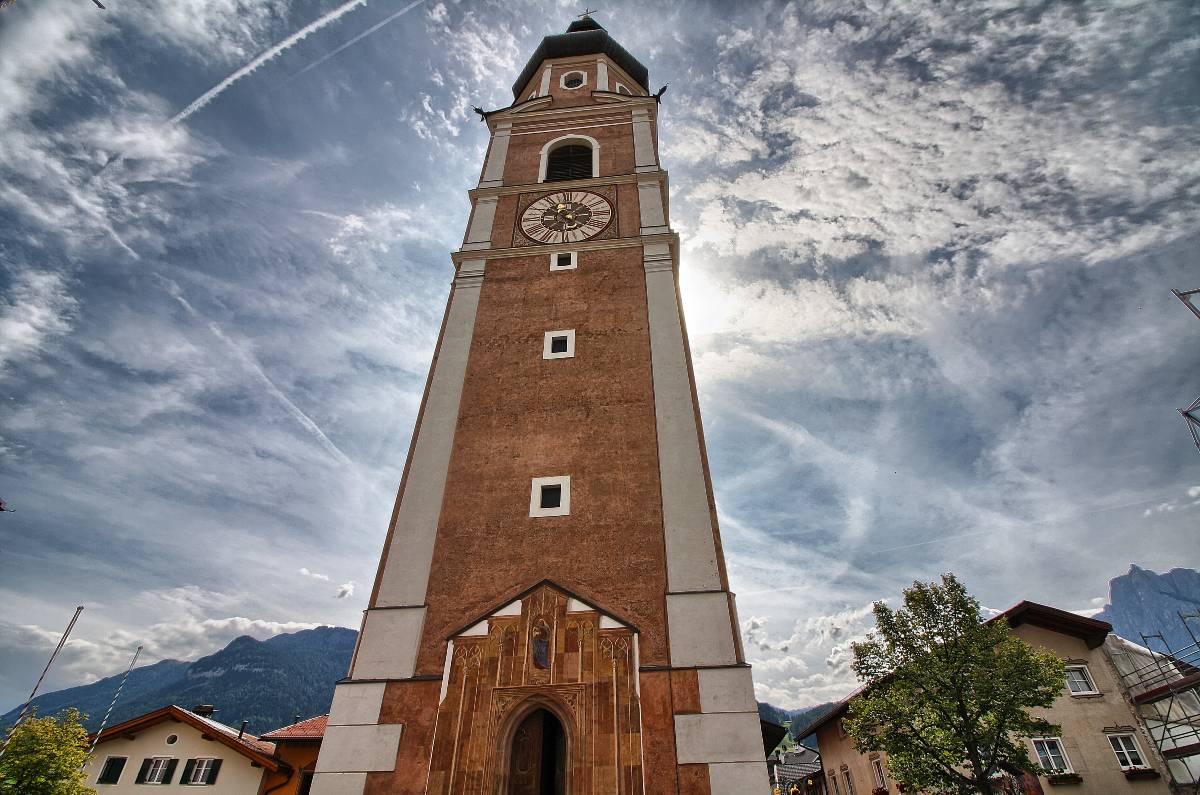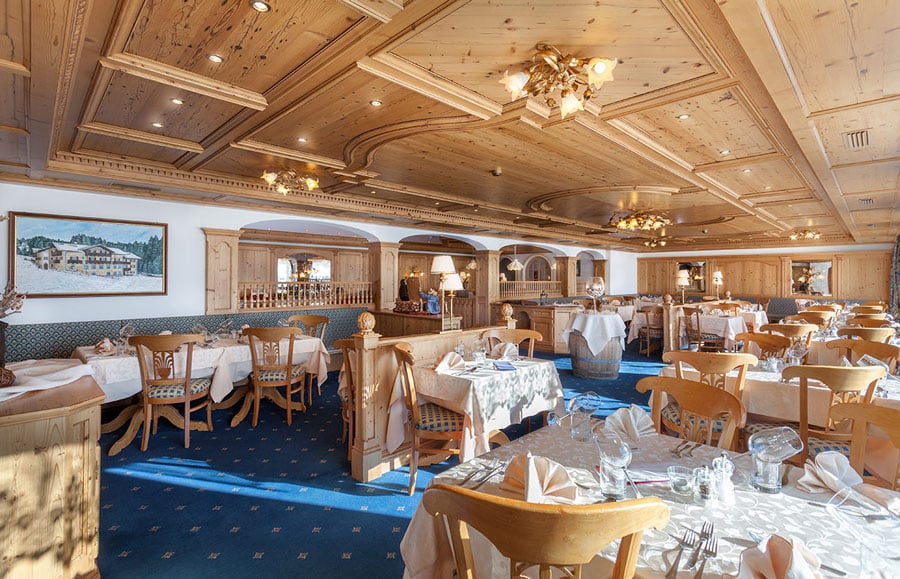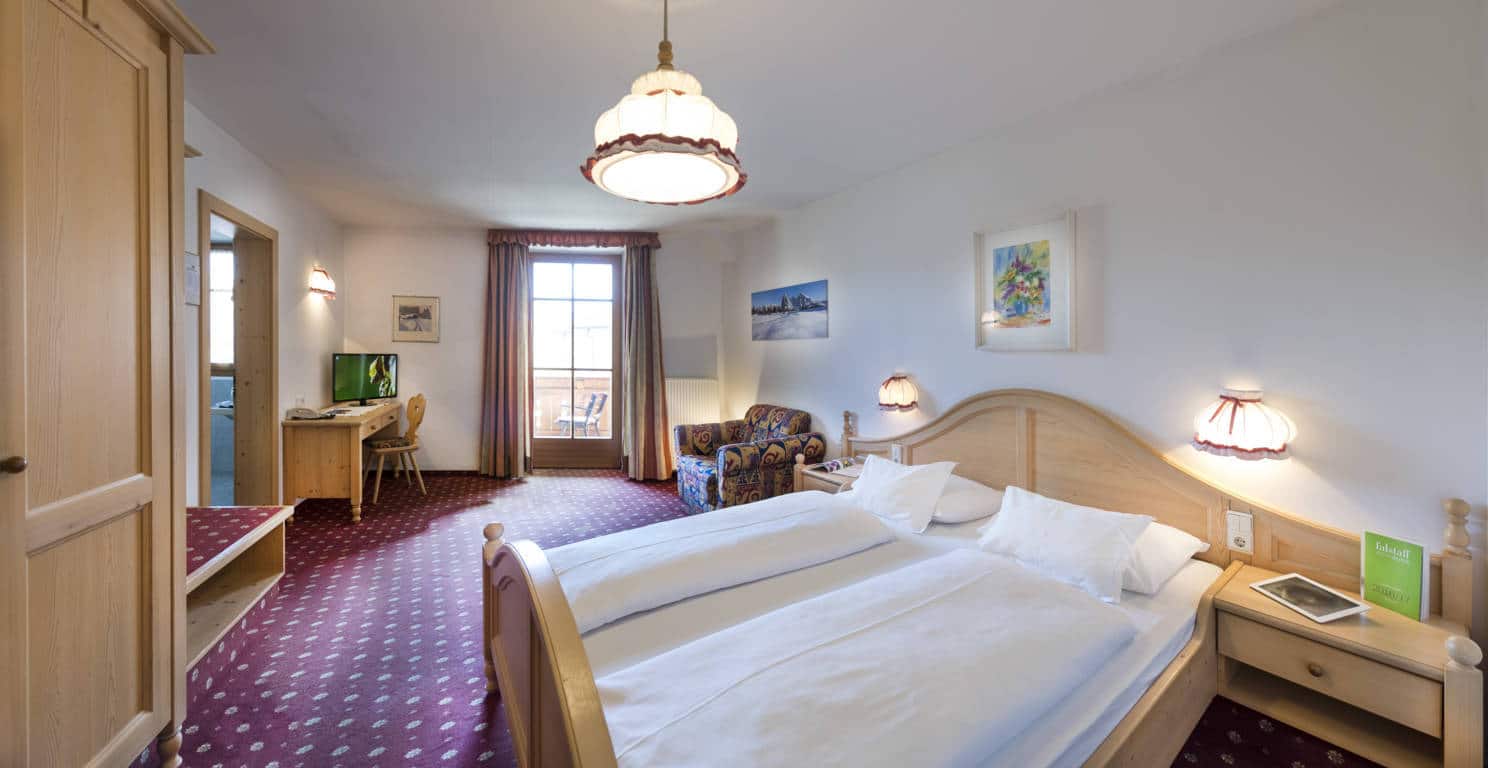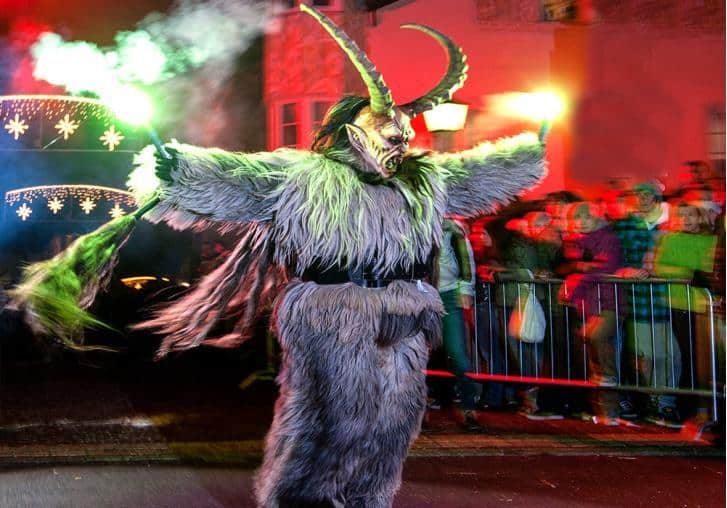Castelrotto, nestled in the spectacular Dolomites, is a place where history, tradition and nature come together to provide a unique travel experience. The village with its imposing bell tower, the symbol of the resort, invites deep immersion in South Tyrolean culture, making it the perfect example of how a small mountain village can become a garrison of values, art and activity at the same time.
The most obvious reminder is surely the architecture, where the bell tower of the Church of St. Peter and St. Paul stands not only as a visual landmark but as a keeper of the stories and melodies that have enlivened the squares and cobblestone streets of the center for centuries. Here, where building facades are embellished with frescoes that tell of the unbreakable bond with the Alpine environment and traditions, the pace of time seems to slow, inviting silent contemplation or inspired dialogue.
In Castelrotto, there are multiple attractions and points of interest that enchant visitors and tell the story of the history and culture of this quaint Alpine village, such as the Kastelruther Spatzen Museum, dedicated to the famous folk music group originally from the village, the museum traces their history and the success of their songs.
Indeed, Castelrotto's culture also manifests itself through its music-above all, the notes of the Kastelruther Spatzen-which accompany the year with events ranging from the Summer Open Air to the timeless Christmas concerts, revealing the intimate but welcoming soul of this community. One cannot talk about the village without mentioning the wealth of events that dot the calendar, with the Oswald von Wolkenstein Cavalcade that takes one back in time to when knights and ladies celebrated ancient deeds, and the "Christmas in the Mountains" that wraps the end of the year in magic.
And then there is nature, an infinity of green and blue hues unfolding at the foot of the village and inviting explorations into the vast expanses of the Alpe di Siusi or the trails of the Sciliar-Catinaccio Nature Park. Here, every trail, every mountain hut like the Marinzen, is a reminder of how harmonious and inspiring the encounter between man and the environment can be.
But Castelrotto is not only a place of incomparable scenic beauty, it also bears witness to a sporting tradition of excellence, as evidenced by the likes of Peter Fill and Denise Karbon who took their first steps here, later taking the name of Castelrotto to the international podiums of skiing.
Of course, the village is a tribute to the high altitudes, but also to man's ability to create hospitality and comfort: accommodations range from luxurious wellness hotels to more cozy family dwellings, from authentic farmhouse experiences to facilities for outdoor adventurers, so that every traveler can find a nest tailored to his or her needs to rest after a day full of discovery.
In the end, what one takes away from Castelrotto is a collage of sensations, from the calmness of ancient rhythms, to the vitality of customs that stand the test of time, from the pure energy of nature, to the sweet melancholy of folk melodies. One is enveloped in a fascinating narrative that invites not only a visit but a genuine participation in the weaving of a reality that is, at the same time, deeply rooted and wonderfully open to the world.


